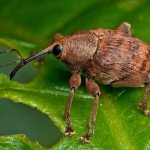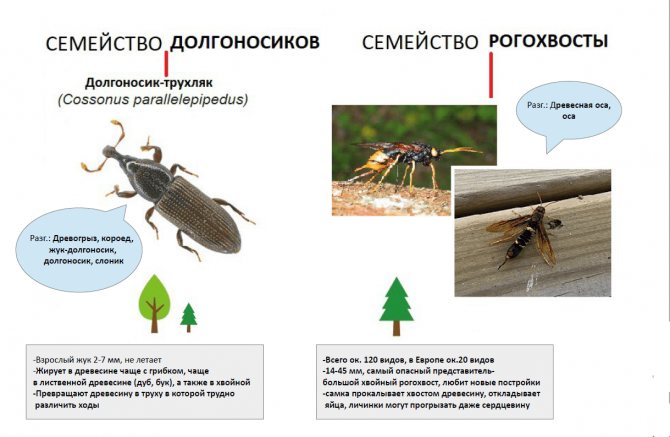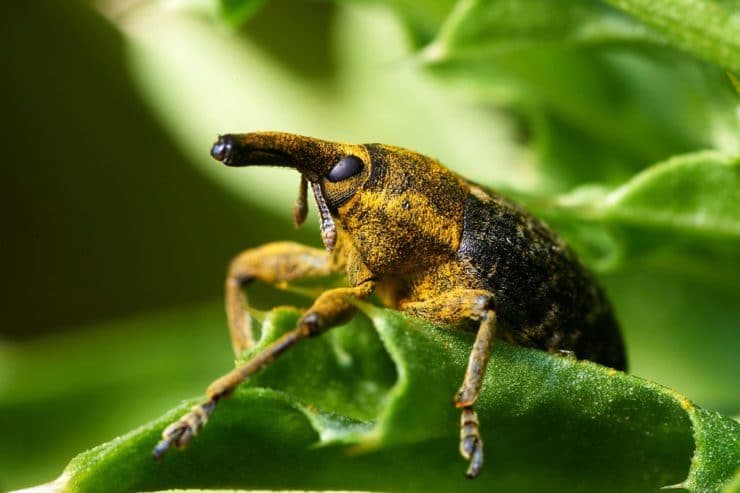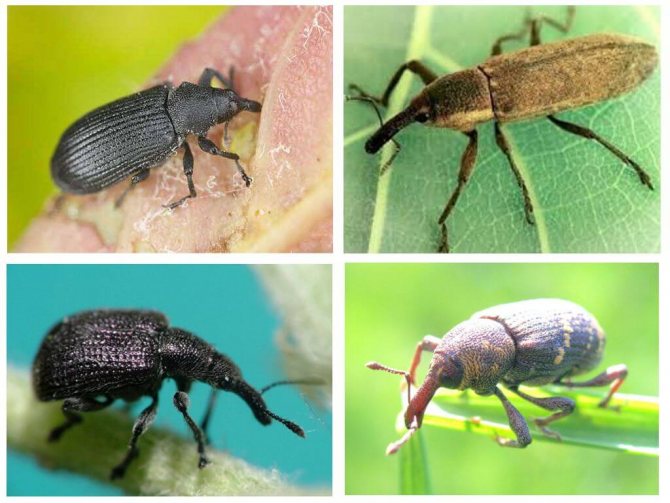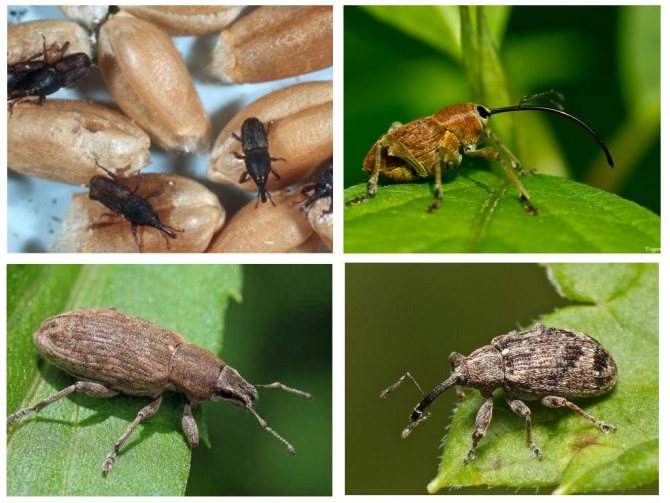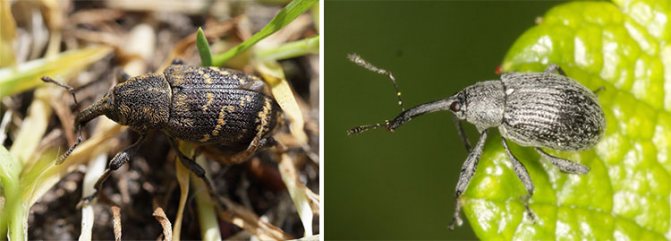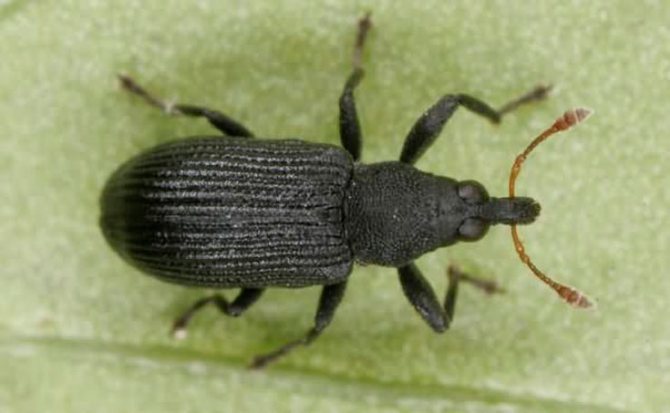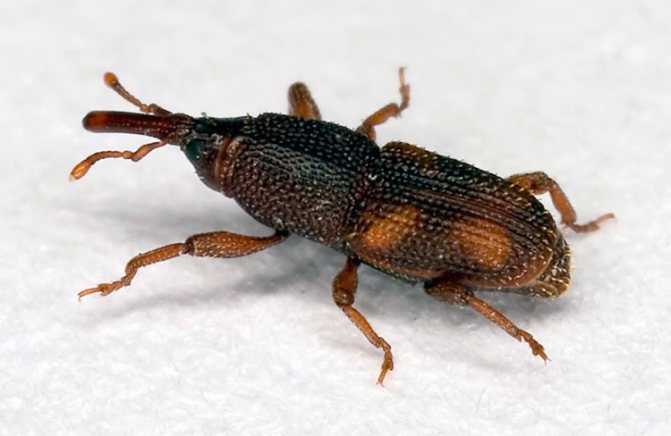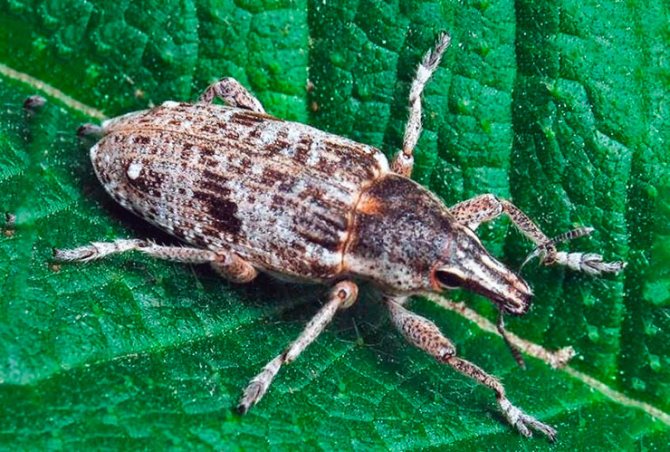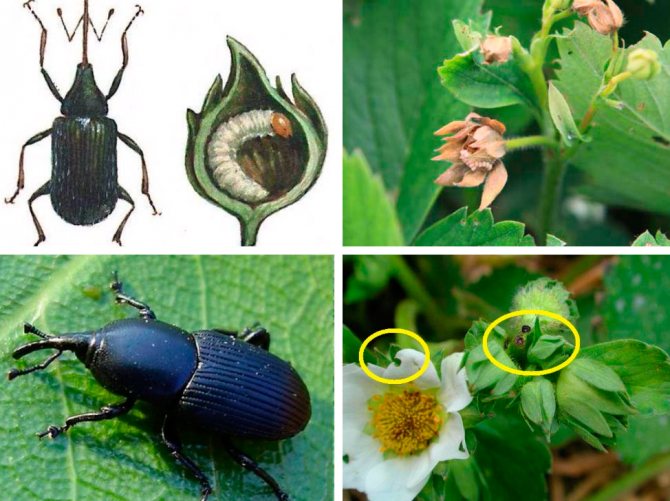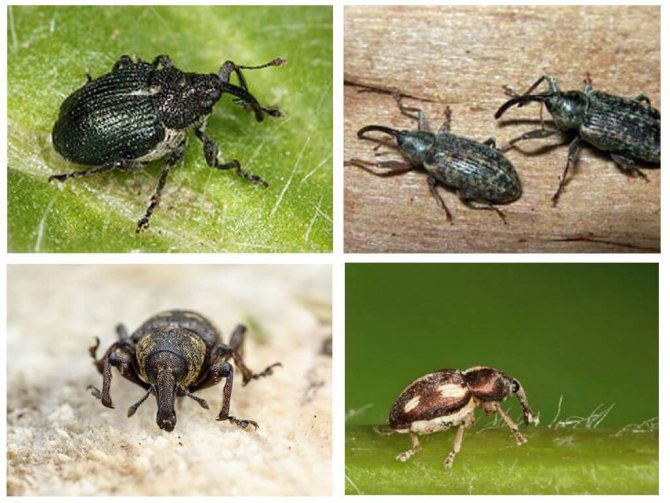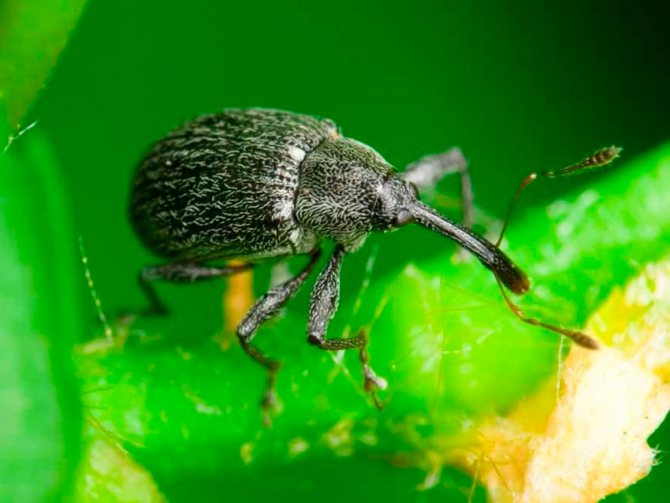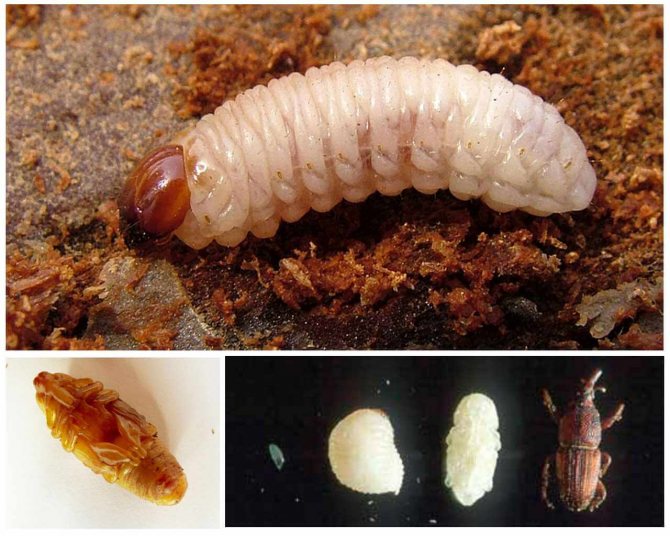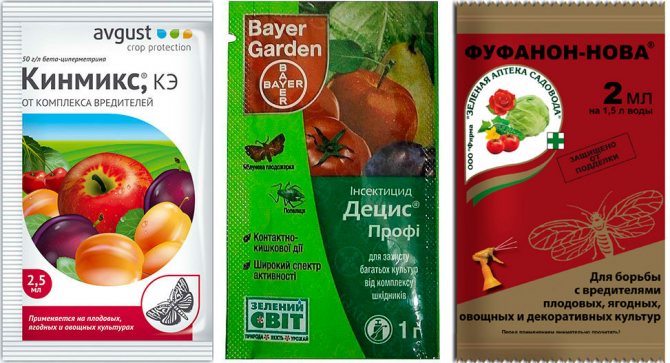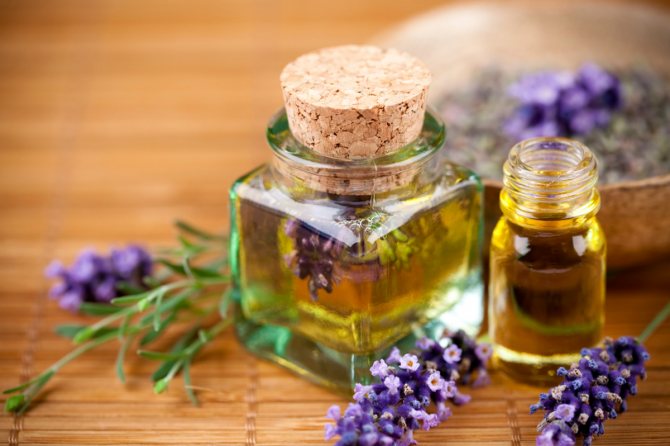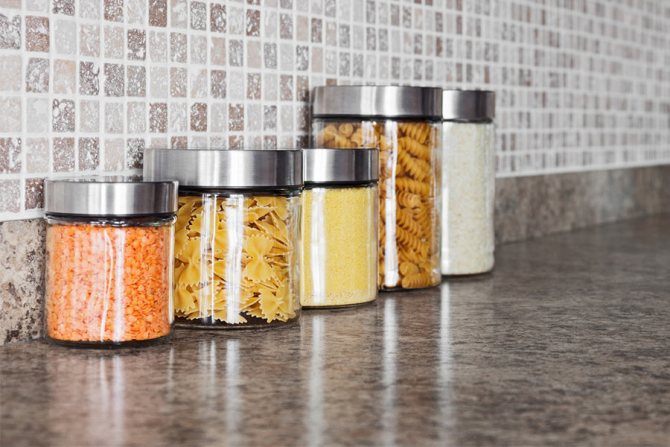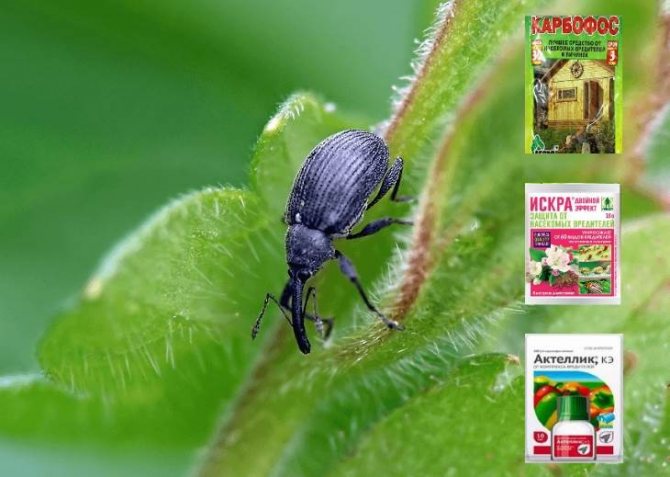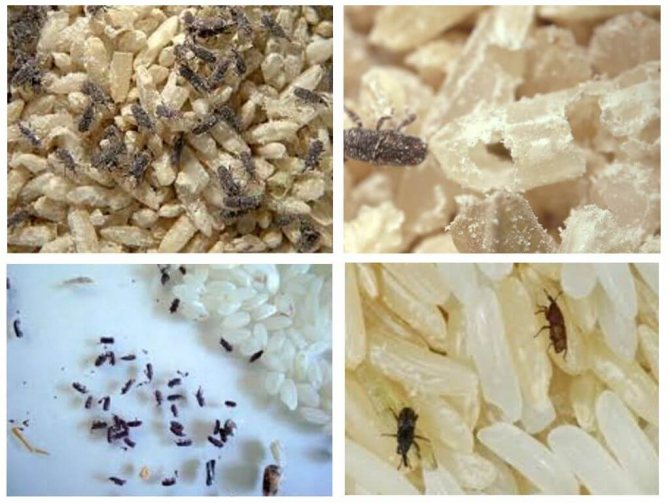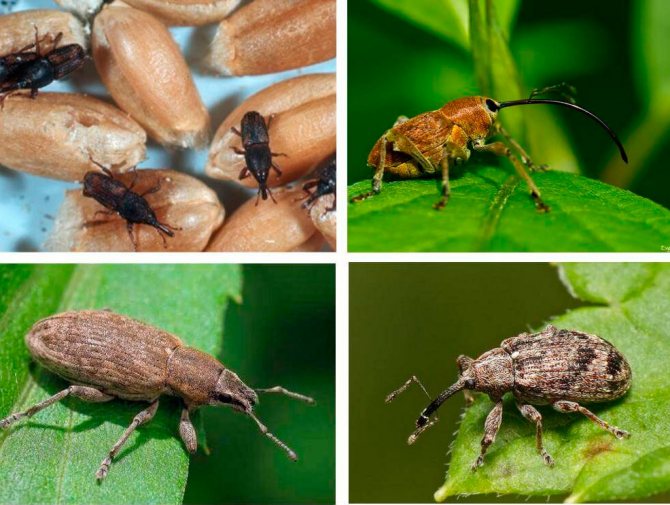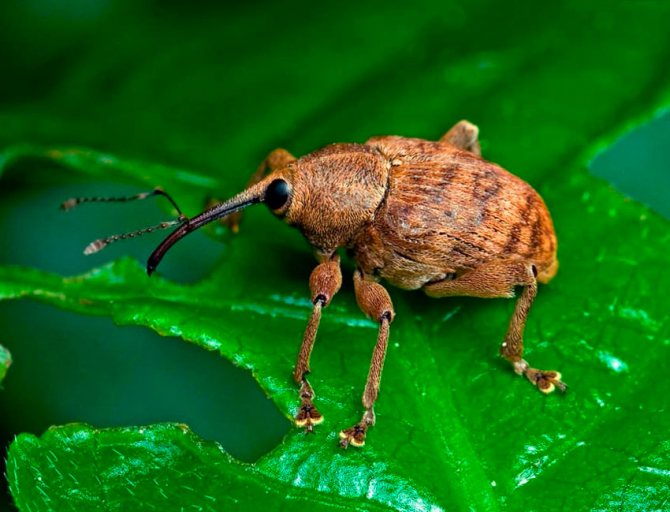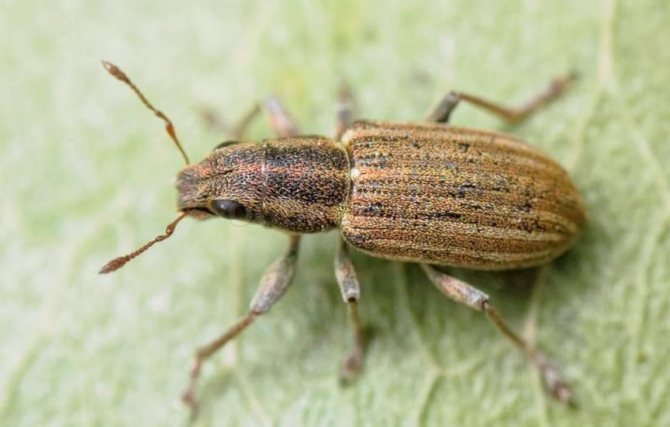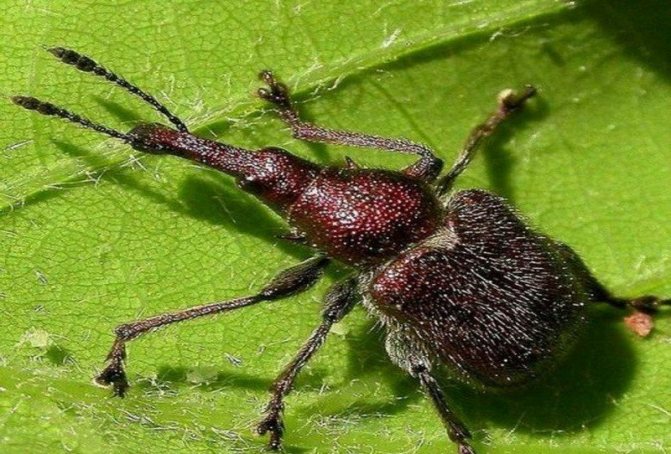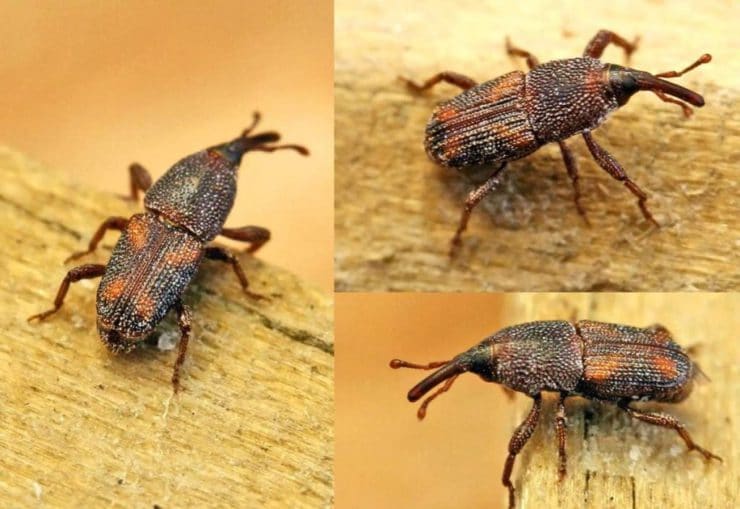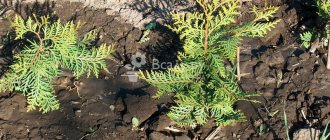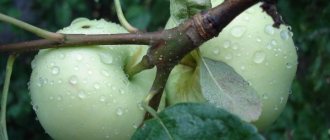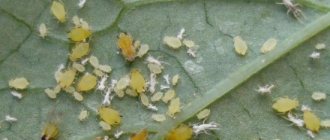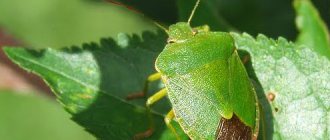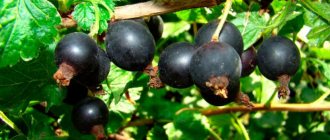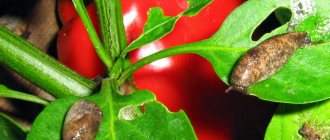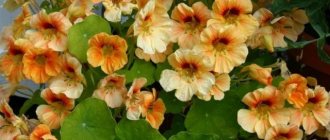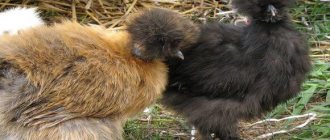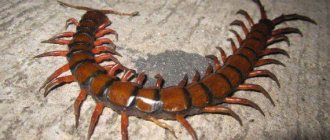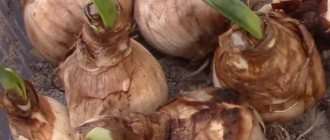Weevils (elephants, noses.) Are one of the largest families of beetles, whose representatives live mostly in tropical zones. In Russia, there are about 5 thousand species of weevils, and there are more than 70 thousand species in total. A distinctive feature of these insects is a slightly elongated head with a long or not very rostrum, at the end of which there is a mouth opening resembling a drill apparatus.
0
See all photos in the gallery
Description
Most often, the body length of elephants is about 30 millimeters, and weevils live in the tropics, growing up to 50 millimeters. The shape of the body can be very diverse: cylindrical, rod-shaped, spherical, rhombic, pear-shaped. The colors range from yellow to black. Sometimes there are spots on the elytra and pronotum. Rarely, the body may have a blue or greenish metallic sheen. The feet are reddish brown or yellow. The upper body may be naked or covered with hairs. Sometimes the body is covered with an earthen crust, and in weevils living near water, the body is covered with brown scales.
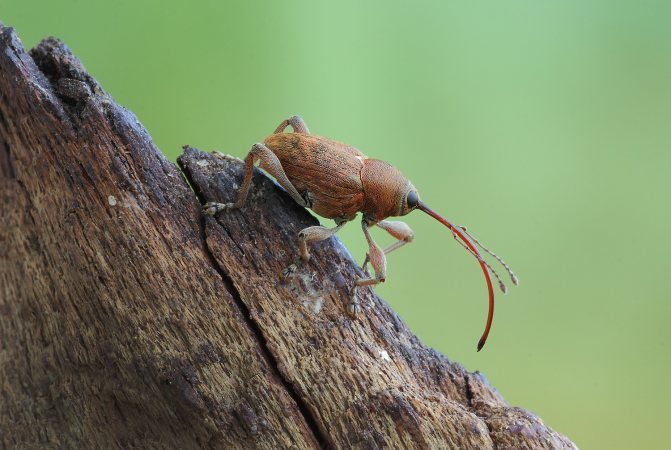
0
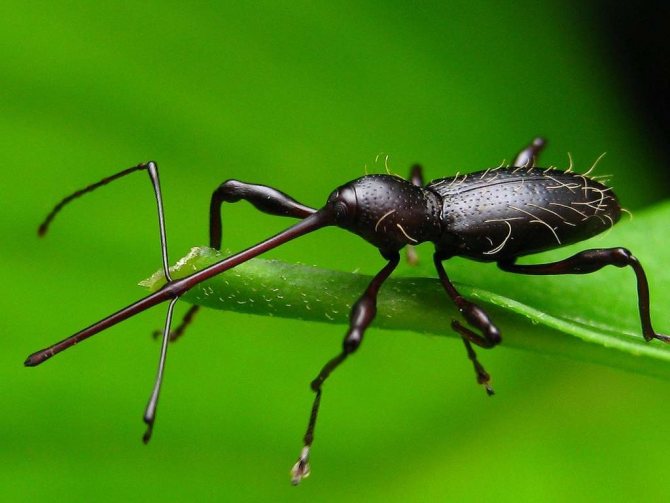

0
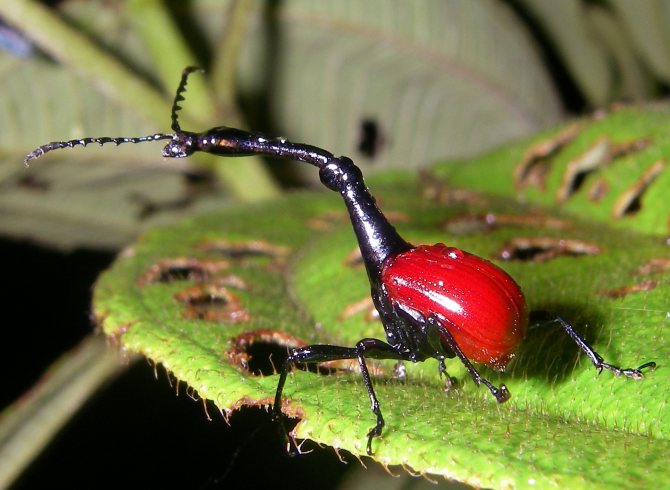

0
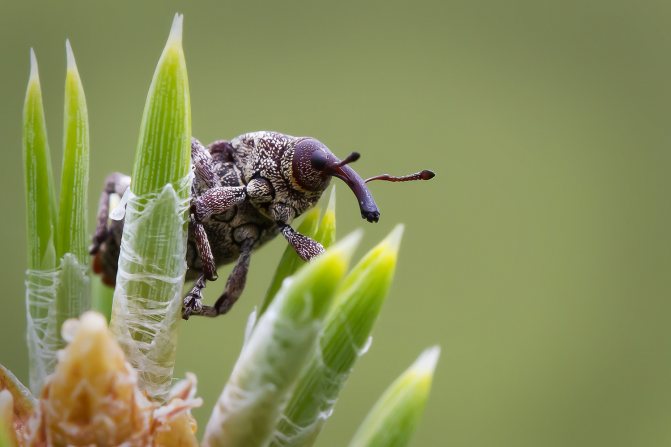

0
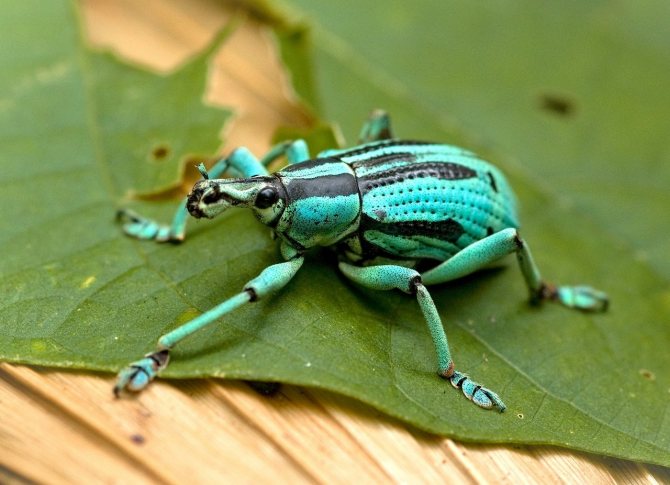

0
Depending on the type, the rostrum can be in different proportions with the body: be shorter than it, but more than three times longer. Many of the beetles have a pear-shaped or spherical head, as well as a body, which, however, is excessively elongated, simplified, cylindrical and rod-shaped. On the head there are pins with antennae. There are winged species of weevils that are capable of flying well, as well as those not capable of flying. The eyes are usually small, but there are also eyeless beetles that live underground and in caves. The color of the beetles is also varied, and the body, covered with scales and chitin, refracts light so that the cover of the creatures seems colorful and beautiful. The family of weevils itself is divided into 2 sections: short-proboscis (Adelognatha) and long-proboscis (Phanerognatha), which, judging by the name, differ from each other in the length of their proboscis (rostrum).
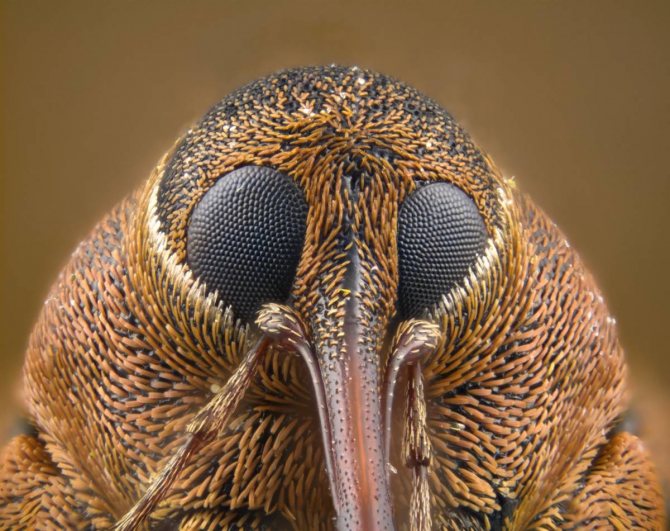

0
How to get rid of weevils: effective methods
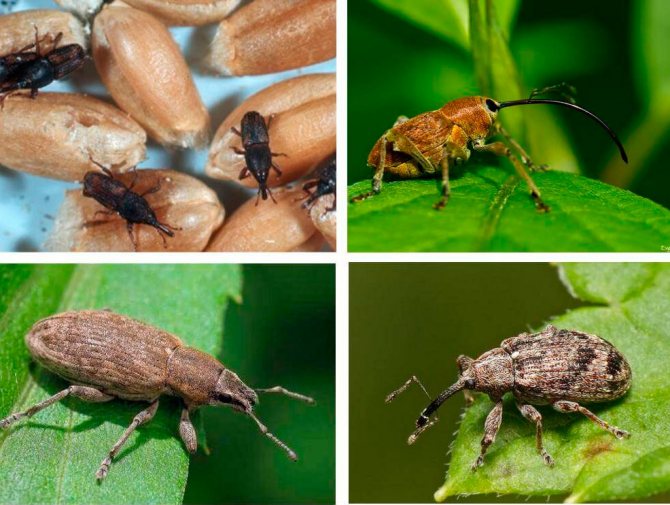

Weevils can not only be dealt with, but must be dealt with. The sooner the necessary measures are taken, the greater the chances of saving the crop. There are a number of effective methods of struggle, without which the beetle cannot be defeated.
Application of chemicals
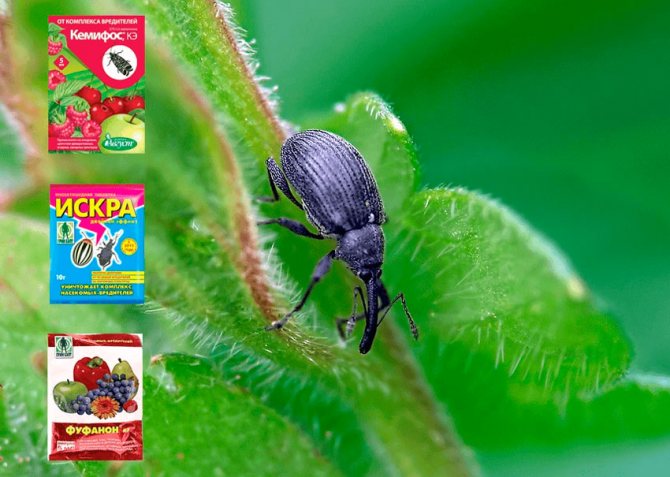

This method of insect control is considered the most effective, since in a short time it is possible to get rid of the bulk of the pests. Spraying of plants is carried out several times per season. At the same time, it is very important to do this in a timely manner. In the case of using poisonous substances, you should carefully read the instructions.
Against weevils, you can use:
- Actellic.
- Karate Zeon.
- Sensei.
- Karachar.
- Karbofos.
- Kemiphos.
- Iskra M.
- Fufanon.
The first time the plants are sprayed before flowering, 5 days before. The second time, the processing of plants is carried out after a week and a half, or maybe a little earlier.
Chemical control agents are used during the period of plant growth and development.
On a note! You should not use the same drug all the time, as weevils can get used to it. In order not to harm garden crops, it is better to try the tool in a small area.
Biological control methods
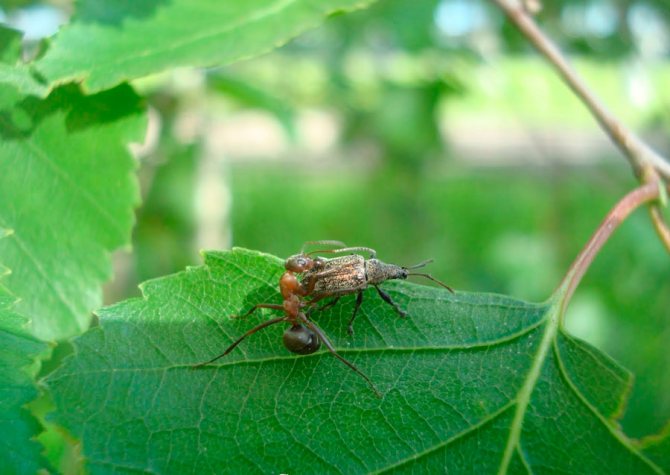

Each insect has natural natural enemies, so these very natural enemies can be involved in pest control. Weevils can be dealt with by birds, ants and special species of wasps.
Some stores sell special nematode powder. The powder is diluted with water according to a special scheme, after which the affected crops are sprayed with this agent. Nematodes penetrate inside the weevils, which subsequently leads to their death. As a rule, plants are processed after sunset.
Folk remedies
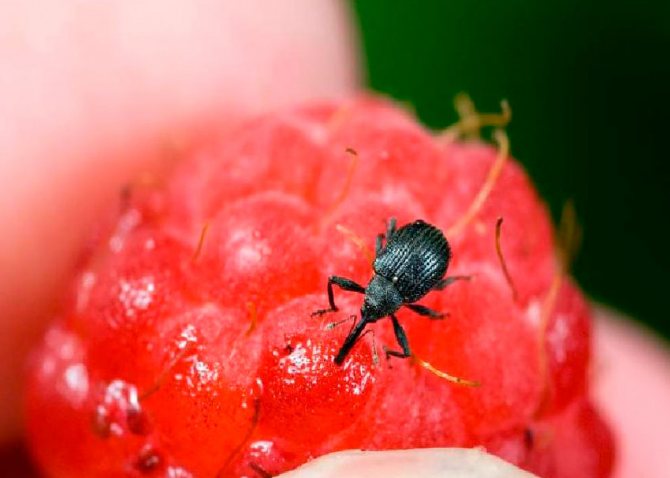

How to prepare effective remedies:
- You need to take onion husks, garlic husks or a coniferous tree branch, place the raw materials in a large container, then pour water over it and leave for a couple of weeks to infuse the product. After that, the infusion is filtered and a working solution is made from it, mixing with water at a concentration of 1 to 10. This solution is sprayed with garden crops every 5 days.
- A bucket of water is taken and 150 g of chamomile is infused in it for a day, after which 50 g of soap is added.
- In 10 liters of water, 400 g of dry crushed wormwood is infused. The solution is infused for a day, after which it is boiled for about 30 minutes, with the addition of soap (40 grams). Plants are processed according to the generally accepted scheme (every 5 days).
Sexual dimorphism
Weevils have pronounced sexual dimorphism. Females are larger than males. In addition, they have a longer and wider rostrum. The elytra are less convex in males. In most cases, females and males no longer have obvious differences in appearance.
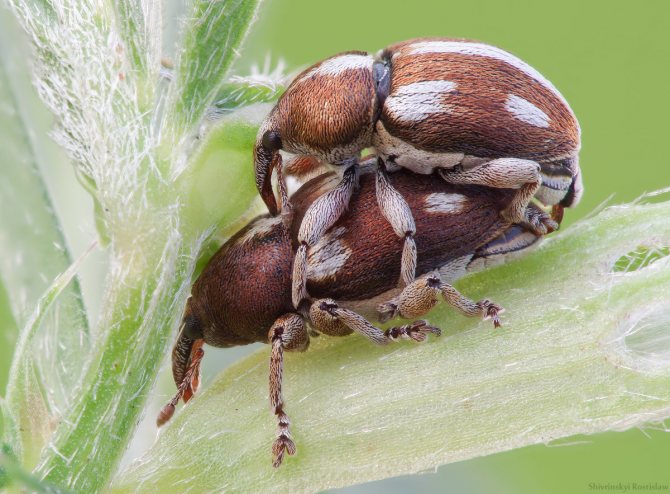

0
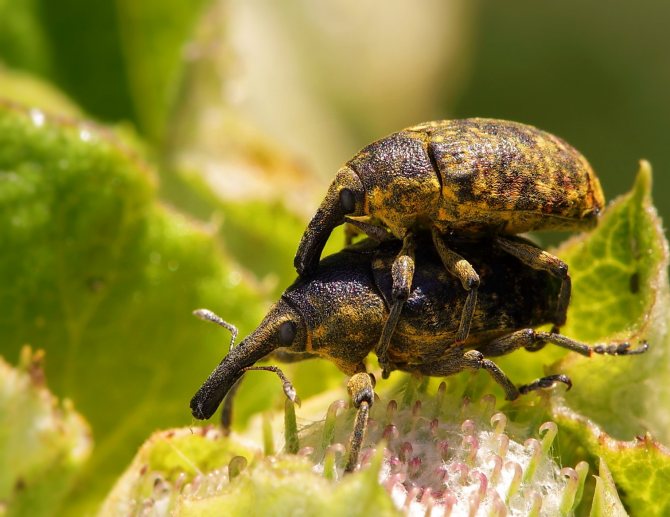

0
Preventive measures
To reduce the risk of breeding weevils in the home, it is recommended:
- When storing products, pre-process;
- Pour cereals, pasta, dried fruits from plastic bags into dishes with tight-fitting lids;
- Inspect products more often, in the summer, once every 14-15 days;
- Do not buy cereals "in reserve" and do not store them for 4 months;
- Do not leave food in the sun;
- Regularly do general cleaning with disinfection in the kitchen.
Simple measures and the ability to recognize the pest by its appearance will save home food supplies and preserve the health of the family.
Lifestyle and nutrition
Most often, weevils winter on the ground and in foliage, but as soon as spring comes, the beetles wake up and begin their active life at a temperature of +10 degrees. Many of the weevil beetle species are pests that cause great damage to farms, forests and destroy numerous plant species. These insects feed on almost all types of plants, but preference is given to dicotyledonous plants. Depending on the nature of the diet, several types of weevils are distinguished: - Weevils, which eat one or several species of plants of close genera (monophages); - Elephants that consume plants of close families (oligophages); - Weevils feeding on plants of different families (polyphages). Adults usually feed on green parts of plants, fruits, flower tissues and pollen. Some species eat wood that is infected with fungi. Aquatic species of weevils feed on aquatic plants.
Cleaning work, renovation of the premises
Wet treatment with special preparations or aerosol disinfestation, preventing the appearance of rice weevils or destroying existing ones. Wet processing is carried out using a motor or knapsack sprayer and a solution of chemicals (karate, EC, karbofos, actellik, decis, fufanon). All surfaces of the future grain storage are processed. For 1 sq. meter is consumed approximately 50 ml. solution.
Grain should also be prepared for long-term storage.... To do this, it is dried, achieving a critical humidity of 15%, and for longer storage - 13-14%.After the crop is dried, it is cleaned of damaged seeds and various weeds.
Before the grain is placed in the warehouse, the areas adjacent to the warehouse are also treated with a sprayer. The solution is used the same as for the internal treatment of the room, but its amount is doubled.
In the first climatic zone, to prevent the development of harmful insects, the collected
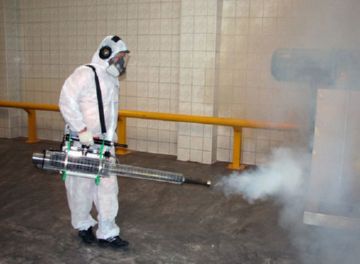

the grain is cooled to the lower threshold temperature.
The second zone also follows the grain cooling method, but in addition to it, it treats the crop with contact insectoacaricides.
In the third zone, on the contrary, the main technique is the use of insectoacaricides, and the temperature method is used additionally in autumn or winter.
It is important to remember that when carrying out pest control measures, it is necessary to be guided by special instructions and regulations established by the state.
Reproduction
Garden weevils in the very first buds that appear, the female weevil lays eggs, of which there can be up to 50 pieces. The female weevil gnaws the bud, lays eggs in it, and the weevil larvae feed on the insides of the bud, then pupate, and when the berries ripen, new beetles appear from the pupae. Other species lay eggs differently, for example, a female barn weevil is able to lay up to 300 eggs in grains, gnawing caves in them, and then covering the entrance to it with her secretions. The offspring of the beet weevil develops at the roots of the beet. The body of the weevil beetle larva has a sickle shape and is most often white or yellow in color. And by the time the fruits and berries ripen, adult beetles already appear from them, which go to winter before the onset of cold weather, in order to wake up again in the spring. Different types of weevils have their own egg-laying cycle. For example, the acorn weevil specializes in oaks and starts breeding in the fall, when acorns ripen on the trees. With his proboscis, like a barn beetle in a grain, he makes a hole to house his future offspring.
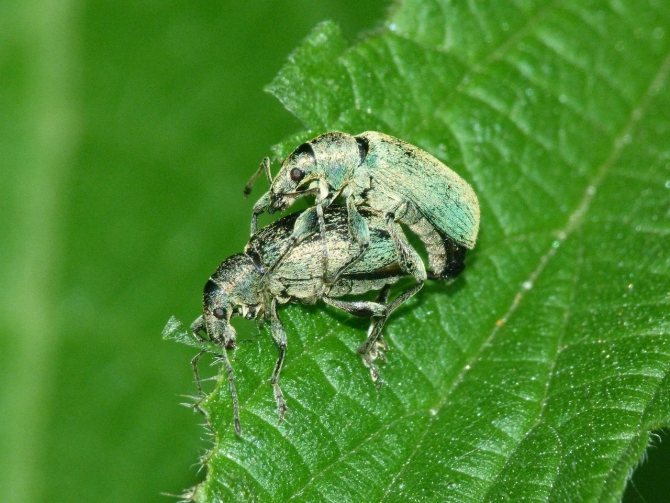

0
The larvae are secretive. They develop inside plants, fruits, buds, flowers, petioles, under the bark, gnawing at their own passages. Many larvae also develop in soil or rotten wood. Their C-shaped bodies are covered with sparse hairs. The larvae have a large brownish head with powerful gnawing jaws. Some species that develop in plants cause pathological proliferation of plant tissue with the formation of a special swelling - a gall, inside which the larvae live. They pupate there. In other species, pupation occurs in the soil, where they create a cradle from the soil and their secretions. Different types of weevils have their own egg-laying cycle. For example, the acorn elephant specializes in oaks and starts breeding in the fall, when acorns ripen on the trees. With his proboscis, like a barn beetle in a grain, he makes a hole to house his future offspring.
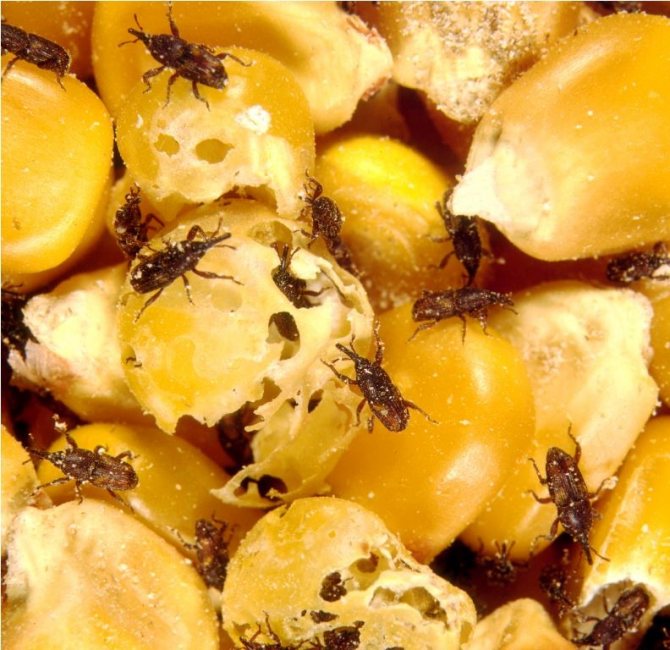

0
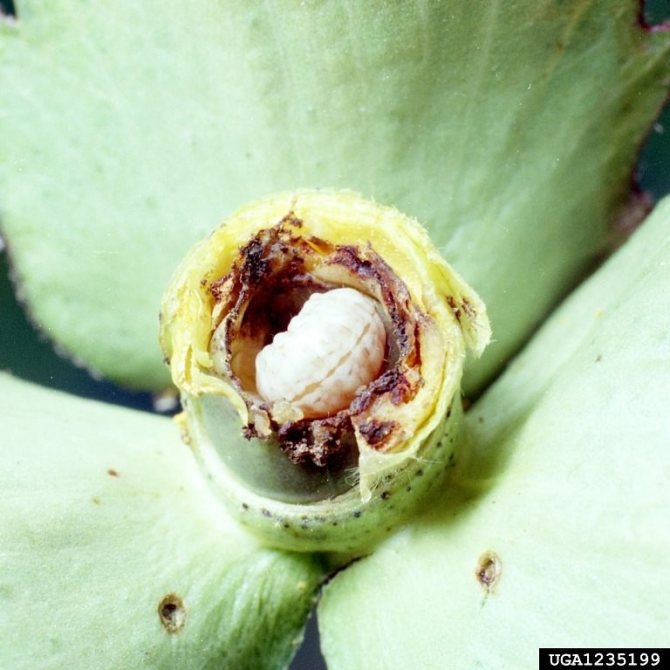

0
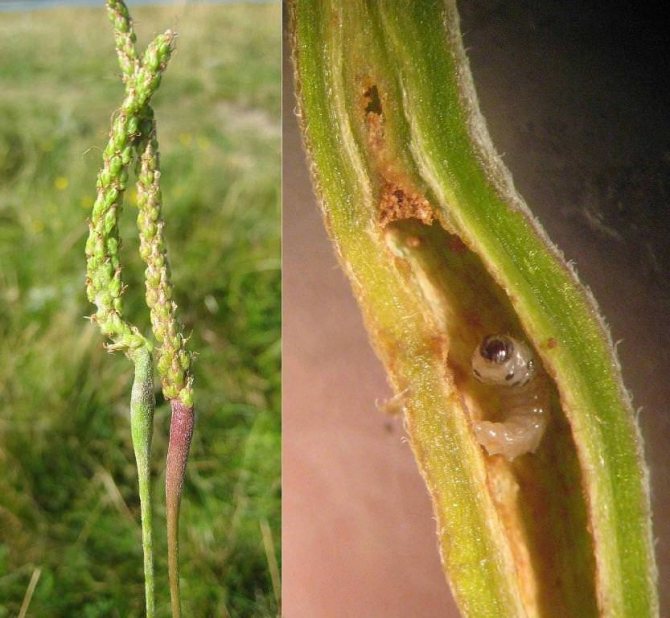

0
Prevention of the appearance
The basis of prevention is the examination of purchased cereals for the identification of adult beetles, larvae or eggs. To avoid the appearance of insects, it is recommended:
- clean containers from the remnants of past cereals;
- keep storage boxes clean;
- store grain collected at different periods separately;
- keep humidity at 2-4%;
- refuse to store cereals in plastic bags;
- store cereals and pasta in hermetically sealed containers;
- regularly inspect stocks;
- timely disinfect kitchen utensils.
To reduce the risks of a weevil in an apartment, it is recommended not to store cereals for more than four months in a row. During the warmer months, stocks should be inspected every two weeks.In winter, the frequency of the check can be reduced.
When storing grains or pasta for a long time, containers with stocks should be placed in cool rooms, where direct sunlight does not penetrate.
It causes very significant damage to the crop, so it is imperative to get rid of the pest called "rice weevil". Otherwise, the insect will multiply quickly and then it will be much more difficult to cope with it.

